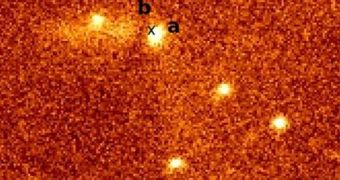Instituto Astrofisica Canarias (IAC) astronomers have come across a very peculiar sight while scouting the skies, of what appears to be the shadow of a forming star system. This is very odd, as viewing a shadow would imply a source of light to project it. Marie Curie CONSTELLATION network ER fellow Dr. Basmah Riaz, one of the team members who have made the find, will present a poster detailing the stellar formations at the University of Hertfordshire, UK-hosted European Week of Astronomy and Space Science conference.
The shadow dark lane, which has been observed to the West of the forming star, stretches for more than 54 billion kilometers, which translates into 360 times the distance between the Earth and the Sun, PhysOrg reports. The 2M171123 protostar is located in the B59 molecular cloud, and was first observed in March 2008, using the Cerro Tololo Inter-American Observatory (CTIO) 4-m telescope, in Chile. While sights such as the silhouetted images of forming stars are not uncommon, none of the other cases shows an offset shadow.
That is to say, astronomers have discovered that the shadow of the protostar wasn't where it should have been, or where astronomers believed it should have been. Independent observations with the NASA Spitzer Space Telescope, from a different perspective, have confirmed the CTIO readings. The IAC team has also said that the 2M171123 formation is not positioned edge-on in respect to our position in space, but that it resides at an intermediary inclination.
One of the possible explanations for the shadow would be that it's being projected on a near-by cloud of gas or dust, which acts like a screen. Various physical properties in that cloud could make shadows coming from the protostar scatter, and appear slightly offset from certain viewpoints. Naturally, this occurrence has made astronomers worldwide very curios, and the IAC team shares that it will further investigate the matter. The researchers now seek to enlist the help of the most powerful Earth- and orbit-based observatories available, in order to peer as deep within the shadow lane as possible.

 14 DAY TRIAL //
14 DAY TRIAL //